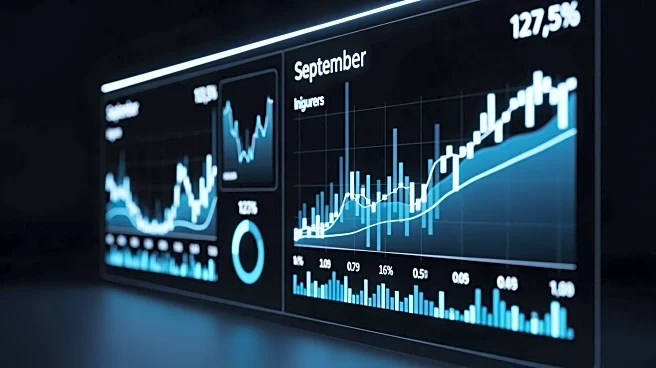What's Happening?
The U.S. 10-year Treasury yield hovered around 4% as investors digested a key inflation report for September, which showed a cooler-than-expected rise in consumer prices. The consumer price index (CPI)
increased by 0.3% on a monthly basis, with an annual inflation rate of 3%, slightly below the anticipated 3.1%. Core CPI, excluding food and energy, rose by 0.2% monthly and 3% annually, both below forecasts. This data, delayed due to a federal government shutdown, suggests a potential rate cut by the Federal Reserve in its upcoming meetings. Interest rate futures indicate a strong likelihood of a quarter percentage point cut in the Fed's next meeting, with further cuts anticipated in December.
Why It's Important?
The inflation data is crucial as it influences the Federal Reserve's monetary policy decisions, impacting borrowing costs for consumers and businesses. A rate cut could stimulate economic activity by making loans cheaper, potentially boosting consumer spending and investment. However, it also reflects concerns about economic growth and inflation dynamics. The cooler inflation figures may alleviate some pressure on households facing high prices, but they also highlight ongoing economic uncertainties, including the effects of the government shutdown. The Fed's actions will be closely watched by markets, as they could signal the central bank's approach to balancing growth and inflation.
What's Next?
The Federal Reserve is expected to announce its decision on interest rates at its upcoming policy meeting. Market participants anticipate a dovish tone, with a focus on supporting economic growth amid inflation concerns. The Fed's decision will likely influence market sentiment and economic forecasts. Additionally, the ongoing government shutdown and its economic implications will remain a significant factor in the Fed's considerations. Stakeholders, including businesses and consumers, will be monitoring the Fed's actions and statements for indications of future economic conditions.











